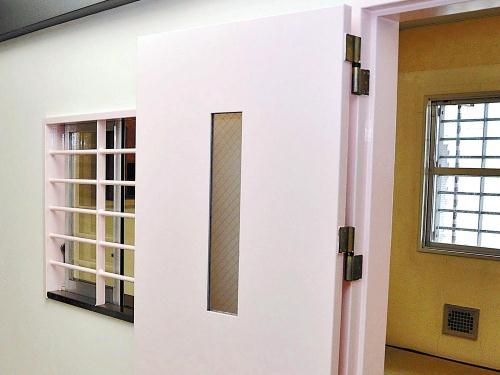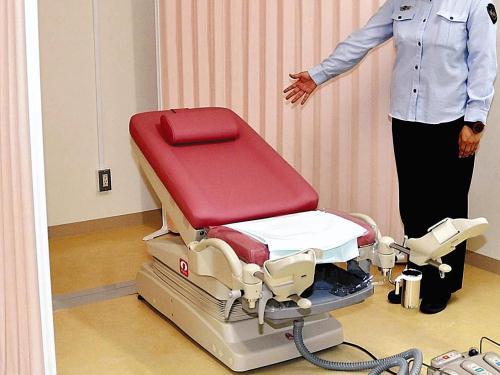Japan’s prison facilities have come under international criticism in recent years. Inmates often do not have heating or air-conditioning, and prisoners on death row live in near total isolation, constantly watched by a camera in their cell.
In an effort to improve its image in the community, Japan’s largest jail, Fuchu Prison, holds an annual “culture festival” inviting members of the public to come to the facility and enjoy such things as bread baked by the inmates. At the autumn event visitors can even enjoy a “prison adventure tour”.

While there is no adventure for them, now the new women inmates at Matsuyama Prison’s Saijo Branch in Saijo City, Ehime Prefecture, should have a better quality of incarceration after renovation work was completed on August 29th. Cell doors have been repainted pink ahead of the prison’s transformation into a female inmate facility, Shikoku’s first.
The walls were originally a more neutral (and oppressive) white. The new interior design is meant to make the facility feel more homely and suitable for female prisoners. Forget orange, perhaps pink is actually the new black? There is also now a child-rearing room where prisoners who give birth may take care of their offspring until he or she is one year old. Over half the prison guards will be female.
The Saijo penal facility will house 83 female inmates from November. There are 33 single-occupant cells and 10 communal cells (holding 5 prisoners). The prison had been home to around 20 male inmates, but they were transferred to the main Matsuyama Prison (Japan’s only open prison) in February 2013. Work started on the pink prison in May this year.

There are female prisoners currently housed in 7 locations around Japan, with 3,440 inmates living in facilities designed for 3,342, according to figures from the end of the fiscal year in March 2014. In other words, capacity is nearly 103%. Even workrooms (almost all prisoners work in Japan, such as glueing paper bags or making bicycle parts) are filled by three prisoners instead of two, making it hard for guards to monitor their wards.
Nearby in Shikoku there is also Tokushima Prison, where conditions are notoriously stringent for inmates and which witnessed a small riot a few years ago.





















